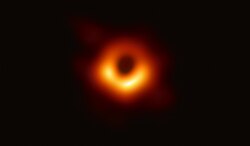The topic of this article may not meet Wikipedia's notability guideline for astronomical objects .(May 2021) |
| Observation data Epoch J2000.0 Equinox J2000.0 | |
|---|---|
| Constellation | Ursa Major |
| Right ascension | 10h 29m 39.11s [1] |
| Declination | +70° 31′ 37.7″ [1] |
| Apparent magnitude (V) | 11.71±0.12 [2] |
| Characteristics | |
| Evolutionary stage | main-sequence star [3] |
| Spectral type | G0V [3] |
| Variable type | planetary transit |
| Astrometry | |
| Radial velocity (Rv) | 5.06±0.32 [1] km/s |
| Proper motion (μ) | RA: −46.527±0.050 mas/yr [1] Dec.: −9.597±0.047 mas/yr [1] |
| Parallax (π) | 3.528±0.0321 mas [1] |
| Distance | 924 ± 8 ly (283 ± 3 pc) |
| Details [3] | |
| Mass | 1.029 M☉ |
| Radius | 1.315 R☉ |
| Luminosity | 1.69 L☉ |
| Surface gravity (log g) | 4.214 cgs |
| Temperature | 5,738 K |
| Metallicity [Fe/H] | 0.025 dex |
| Rotational velocity (v sin i) | 2.7 km/s |
| Age | 8.3±2.1 Gyr |
| Other designations | |
| 2MASS J10293910+7031378, Gaia DR2 1076515002779544960 | |
| Database references | |
| SIMBAD | data |
| Exoplanet Archive | data |
Qatar-8 is a faint solar analog located in the northern circumpolar constellation Ursa Major. With an apparent magnitude of 11.71, it is impossible to detect with the naked eye, but can be located with a powerful telescope. Qatar-8 is currently 924 light-years (283 parsecs ) away from the Solar System, but is drifting further away, with a radial velocity of 5.06 km/s.


